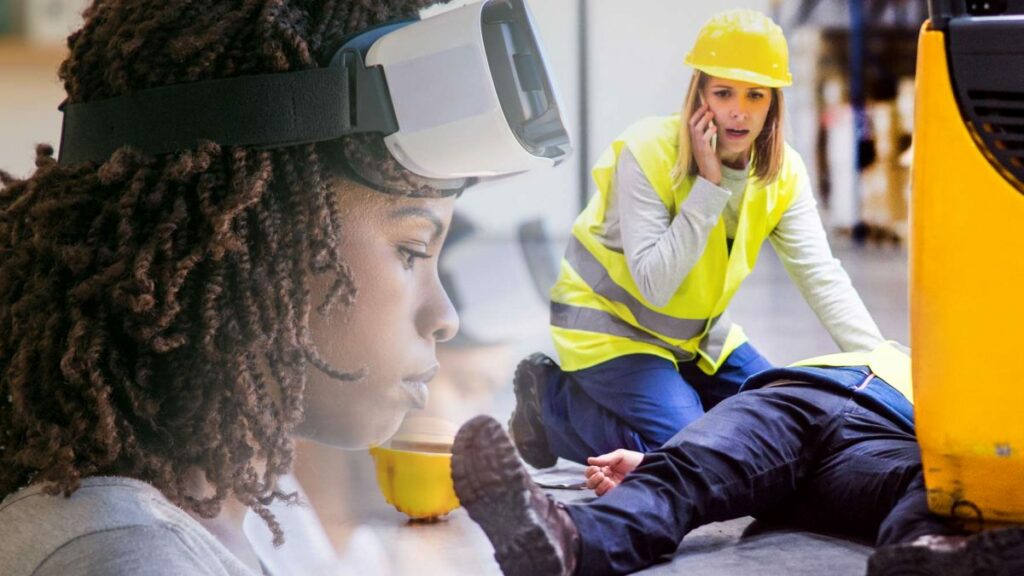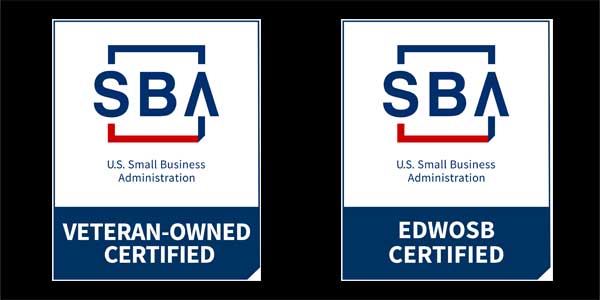The Benefits of VR for Safety Training
The benefits of VR Training are endless. In this video hear how VR Training is changing the way training is done! Jen Lastra, CEO of 360immersive, explains how using a VR snapshot is as simple as being able to insert a hyperlink directly into a PowerPoint presentation that makes virtual reality affordable for the masses!
Enjoy the video and read along with the exact transcript below:
Jennifer Lastra (CEO 360immersive):
A VR snapshot is something as simple as being able to insert a hyperlink directly into a PowerPoint presentation.
JennyQ (Host & CMO 360immersive):
I’m here with Jenn Lastra, the CEO of 360 Immersive, and we’re talking today about how safety managers can enhance their existing training with virtual reality safety modules. Hi, Jen. Welcome.
Jennifer Lastra:
Hi. Thanks for having me. And I know you’re here because you’re curious, you’re curious, you’re curious.
JennyQ:
Well, absolutely. Honestly, everybody’s curious right now about how virtual reality can enhance existing trading because there are a few things that we know about virtual reality with retention and engagement, what can you share with us on that?
Jennifer Lastra:
This is all about taking our virtual instructor-led training and online e-learning training to the next level. So a lot of instructors are already trying to figure out how to use and implement blended learning styles. So adding in the component of virtual reality simulations, those little micro training sessions we talk about, is a key component to increasing engagement, to helping our adult learners retain content in a more productive and meaningful way, and just really, I think, more so getting excited again about training and having fun with it.
JennyQ:
Oh, okay. So fun is good.
Jennifer Lastra:
Fun is good.
JennyQ:
I think a lot of people, when they think of creating custom virtual reality content, they are immediately shocked at could we even afford it? Is it anything that would even fit inside our budget? What do you say to people?
Jennifer Lastra:
I think we have to go back to remembering the basics. And what I mean by that is creating content that is very specific to the learning objectives and outcomes, those behaviors that you’re trying to identify and correct, so it doesn’t have to be expensive whatsoever. It doesn’t have to be custom all the way. It can, and some organizations have the bigger budgets to be able to afford that. Great, if that’s the case. But then there are also those circumstances, and when we talk about getting back to the basics, those circumstances of just hazard identification and situational awareness, those environments that are inherently found in everyday work environments. So when you’re talking about those, you’re talking about more generalized safety training. And those are types of experiences that can be created and delivered like off-the-shelf training. They can just be sprinkled in throughout your traditional PowerPoint or instructor-led presentations. So it doesn’t have to be expensive.
Jennifer Lastra:
And our organization does everything from full-scale custom content all the way through to what we’re coding and calling now snapshot, like VR snapshots, which again are these more generalized learning environments where you’re really focusing in on how to do identification, situational awareness, that baseline first level steps towards a safe, understanding your environment and putting safety in the mindset of everybody.
JennyQ:
Okay, fascinating. Can you tell us more about what that actually looks like, to take a virtual reality snapshot and implementing that into an existing training for a company or a corporation?
Jennifer Lastra:
Okay, sure. So let’s say you’re like many trainers right now that are looking to take their instructor-led training and be able to deliver that virtually, so let’s say you had a PowerPoint presentation that you traditionally trained with and now you’re going to put that online. A VR snapshot is something as simple as being able to insert a hyperlink directly into a PowerPoint presentation so that when the instructor clicks on it, the environment is what is displayed. And then based on camera placement throughout this environment, an instructor would be able to lead a class around that environment to identify potential hazards within that specific area or even supplement their lesson by asking questions to their audience or their adult learners and create this dialogue back and forth, like “Tell me all the things in this environment that you see that could be potentially hazardous. Talk to me a little bit about what you think might happen next or what could have caused this situation to take place in the first place”. And so it’s more of a conversation starter. Maybe it’s used as a pre-test or a post-test type of a question or question and answer session, but really the idea is to get everybody focused on … And so they don’t have to imagine or visualize what a training scenario might look like. Everybody can be on the same page of what that situation looks like. Does that make sense?
JennyQ:
Absolutely. And I can’t help as I’m visualizing it, I can’t help but imagine what kind of feedback or reactions have you gotten from the people who are used to having the traditional training and now suddenly they get interactive, immersive modules that they can actually engage with. What’s their reaction?
Jennifer Lastra:
Mostly what we hear is that it’s no longer instructors and trainers pushing information, now it’s this dialogue coming back and forth. And I think from a trainer’s perspective, they’re feeling a lot more engaged and connected with their viewers and their adult learners. And so for them, it’s a new tool in their tool belt.
Jennifer Lastra:
Now from the perspective of an adult learner, again, they don’t have to, in their mind, try to figure out what the instructor might be talking about. They have a better way of being able to visualize that. And as we all know, VR is the closest or next best thing to hands-on simulations, like actually doing the work, but the snapshots, what they allow for is, again, an opportunity to examine in an environment and actively participate back and forth. And so we are seeing engagement and retention and overall, I think, enjoyment in the class increase. And so that participation is key from the adult learners and I think it mutually benefits both the instructor and the end user at the same time.
JennyQ:
Yes, I could totally see that. When you talk about retention, have there been any … I know VR is very, very new in safety training, so have there been any studies or any research or do we have any numbers on how much retention has actually increased by implementing VR modules?
Jennifer Lastra:
There are studies and there have been studies going on since the 1960s of the effects, and the positive effects, of virtual reality technology. It’s becoming more mainstream. I think anywhere from 9 to 10% of Fortune 500 companies are using VR right now in their training and education programs. And those numbers are going to continue to advance, they’re going to increase, especially as organizations are taking their training more online and being done virtually.
Jennifer Lastra:
Focusing on outcomes and statistics for higher retention, higher engagement rates with VR really also boils down to the safety culture within an organization, how quickly our organization’s just trying to find the next latest, greatest technology to sprinkle throughout their safety training programs. That is not going to be nearly as effective as an organization that has safety culture that is inherently embedded where everyone is watching each other, watching out for each other’s safety. So when we start bringing in the components of virtual reality, one of the benefits of it is the ability to not just focus and role play based on your own personal safety, but also you can shift that focus and that perspective to the safety of your buddy or your teammate.
Jennifer Lastra:
Now, when you start training from the perspective of monitoring somebody else’s awareness and safety, it almost starts to train your brain to not just worry about your own personal safety, but that of those around you and the environment that everybody is working in. And hopefully, that begins to shift not just the primary focus of my own safety, but those of the others around me.
Jennifer Lastra:
The biggest driving factor in my mind is how serious is safety taken within an organization that they’re willing to experiment with different types of technologies to curb those behaviors and attitudes and make it more of a holistic approach and not just sprinkling the safety pixie dust across training and education, hoping for better outcomes.
JennyQ:
That sounds so powerful when you put it together like that. And so it sounds to me like it’s really, the outcome of implementing virtual reality, depends on how effectively the company implements it.
Jennifer Lastra:
Absolutely.
JennyQ:
Yes. So good. So good. Now, if somebody wants more information on how this would help their organization specifically, what’s the best way to connect with you?
Jennifer Lastra:
Absolutely. So reach out to us at info@360immersive.com. My name’s Jennifer, you can put jennifer@360immersive.com. Reach out to us on our social media channels. LinkedIn is a great place to connect, you can ask any types of questions there. We do offer some free consultation as well just to understand what type of challenges a trainer might be experiencing right now. We’d be more than happy to listen to what’s going on within your organization and sit down and maybe develop a plan for your strategy for implementation. And again, looking at what your learning objectives are, anything from custom work to the other opposite spectrum of more generalized off-the-shelf training. Those are all conversations we’re more than willing and able to have, and we welcome that type of communication.
JennyQ:
Perfect. Awesome. Thank you so much, Jennifer. Thanks for joining me.
Jennifer Lastra:
Yeah, thank you for having me.


